![]() Published in Romania - Social interactions and entertainment - 11 Nov 2023 04:09 - 1
Published in Romania - Social interactions and entertainment - 11 Nov 2023 04:09 - 1
Welcome Dear readers and citizens of erevollution, this time I’m going to write little summaries about some of the ancient civilizations. As you know history isn’t 100% correct, there are lot of discussions and debates about its truthfulness (the winner writes the history). So if you’ll read information that is different from one you know, don’t be upset or get angry, just get information and move on :)
MESOPOTAMIA

Ancient Mesopotamia was located between the Tigris andEuphrates Rivers, hence yielding the name “the land between two rivers.” Theserivers made the land optimal for farming, earning Mesopotamia its other nickname, “the fertile crescent.” In order to manage the rivers properly anduse them to their advantage, the Mesopotamians devised a way to irrigate their crops through a system of canals and earthen walls. Aside from the fertile soil and the rivers, however, Mesopotamia had few natural resources. Lacking wood, for example, the Mesopotamians built their dwellings out of mud brick, one resource that was plentiful. Such bricks were also used to build defensive walls around the city-states, which had no other means of protection. What the Mesopotamians lacked in natural resources they could trade for; throughout Southwest Asia, they traded figs, dates, grain, and other crops for items such as gold, ivory, and other precious stones.
Circa 3300 BCE, the first civilization developed in Sumer, aregion in southern Mesopotamia. The cities throughout the region, such as Babylon and Ur, became prosperous centers of trade, religion, and education, but most people still lived in the countryside where access to these intellectual pursuits was much less available. A social hierarchy developed in Sumer: the king and then the priests were at the top; the upper cl consisted of landowners, wealthy merchants, and government workers; the middle cl comprised other free people including artisans and farmers; slaves were at the bottom. The Sumerians were responsible for a number of important technological inventions including the wheel, the first written language (cuneiform), and a base-60 math system.
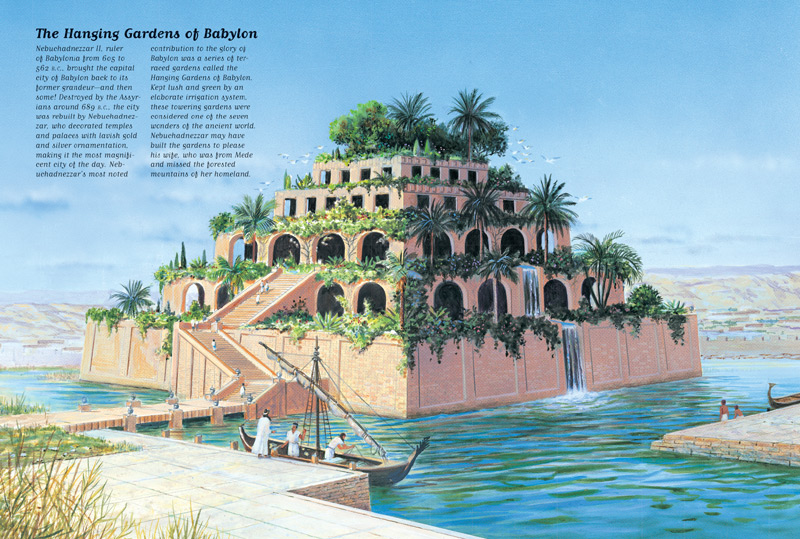
The Mesopotamians were also the first empire builders.Sargon the Great, an Akkadian leader, unified many of the Mesopotamian city-states into an empire over which he ruled. King Hammurabi, a Babylonian,ultimately took over the Akkadian Empire and went one step further; he unified the city-states through a legal code. The Code of Hammurabi was a legal codebased on retribution that was meant to act as a deterrent and treated everyone, regardless of social cl, fairly. Over the course of Mesopotamian history, the Assyrians, the Chaldeans, and the Persians also had control of the empire.
ANCIENT INDIA

Located on the Asian subcontinent, India has a uniquegeography. Home to the Hindu Kush and Himalayan mountains and the Ganges and Indus rivers, India was another prosperous ancient civilization. The Indus River Valley became an agricultural settlement growing wheat and barley and domesticating sheep, goats, and chickens. The people of this region learned to make tools from bronze and copper. Cities developed as well, the largest of which were Mohenjo-Daro and Harappa. The ancient Indians even created plannedcities that were surrounded by defensive walls and laid out in grids. The Harappans also devised a drainage and ewer system the likes of which were not seen again until the nineteenth century.
Around 1500 BCE, a group of Indo-European nomads calledAryans migrated to India. They brought with them their native dialects and religious beliefs as well as their social structure. The Aryan social structure was divided into three levels: warriors, riests, and commoners. Eventually, their social structure became more elaborate, and people were divided into castes: Brahman(priests, scholars, and teachers), Kshatriya (rulers, nobles, and warriors), Vaisya (bankers, farmers, and merchants), and Sudra(artisans and laborers).
The Aryans' earliest religion was Brahmanism in whichfollowers worshipped deities in nature. In an effort to develop a more complexunderstanding of the world, the religion morphed into Hinduism in which the foremost deities were Brahma, Shiva, and Vishnu. Buddhism also began in ancient India. This religion is based on the teachings of Siddhartha Gautama and includes the Four Noble Truths that ert thatpeople can end suffering by following the Eightfold Path.
Separate Aryan kingdoms were united by Chandragupta Mauryain the fourth century BCE. The greatest Mauryan king was Asoka, who codified laws and ameliorated conditions throughout the region. India's golden age, however, took place under the reign of the Guptas, who began their rule in the fourth century CE. Tremendous advances were made in the arts and the sciences. Poetry was written, temples were built, and the decimal system was invented.

The legacies of ancient India are many and varied. Hinduismand Buddhism are among the world's largest religions today. Their epics, the Bhagavad Gita and the Mahabharata,are still read worldwide. The decimal system and the number zero are used around the world for a variety of purposes. In short, India was one of the most prosperous and diverse ancient civilizations.
Ancient Egypt

The geography of Egypt played a critical role in itsdevelopment as a civilization. The world's longest river, the Nile, was both a natural resource and defense for the ancient Egyptians. Although the Mesopotamians also benefited from settling in a fertile river valley, the Egyptians' irrigation surped that of the Mesopotamians in that the Egyptians were able to predict the Nile's flood cycles and plan their irrigation accordingly. Silt deposited after the Nile's annual flood made the land tremendously fertile and allowed the Egyptians to become completely self-sufficient. Ancient Egyptiansgrew grapes, figs, and dates as well as barley, wheat, and a host of vegetables.
Job specialization characterized the workforce of ancientEgypt. Some Egyptians quarried for different minerals and rocks while others tended to farming, fishing, and trade. Atop the social hierarchy sat the pharaoh who was followed by the priests and nobles. Scribes and government officials were beneath them but above the levels of craftspeople and merchants, farmers, laborers, and laves. Women had nearly as many rights as men did, which was unprecedented in the ancient world.
The Egyptians made some significant technological advancesin the arts and sciences. Their system of writing, hieroglyphs, waspictographic and highly complex. Medical knowledge was advanced as a result of the extensive preparations to bodies for the afterlife. Geometry was necessary to build the pyramids, a critical element of Egyptian culture. The Egyptians were polytheistic and had a positive view of the afterlife. In fact, the entire culture was focused on what was necessary for a happy afterlife. As a result, entire professions, such as embalming and architecture, were developed. The first pyramids were constructed in the third millennium BCE. They were built of millions of blocks that had been quarried along the Nile and were full of great riches and possessions. Unfortunately, many of the pyramids were looted, leaving few artifacts behind.
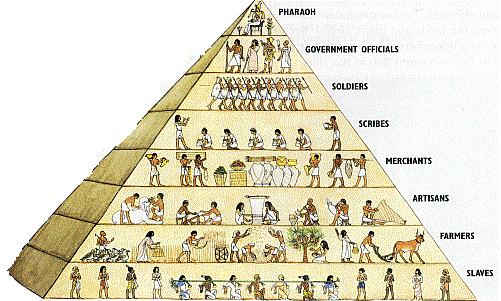
Ancient Egyptian history can be divided into three eras: theOld, Middle, and New Kingdoms. Each was ruled by a series of pharaohs who got their power through dynastic succession. The decline of ancient Egypt was precipitated by weak rulers in the second half of the New Kingdom, invasion, and general instability. Although Egypt's neighbor to the south, Kush, successfully reigned over Egypt for several hundred years, they were ultimately defeated by the Assyrians, who later succumbed to the Persians, the Greeks, and the Romans.
Nubia
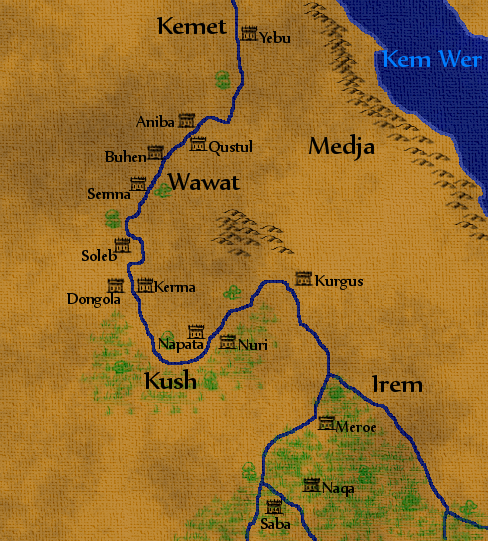
Nubia was home tosome of Africa’s earliest kingdoms. Known for rich deposits of gold, Nubiawas also the gateway through which luxury products like incense, ivory, and ebony traveled from their source in sub-Saharan Africa to the civilizations ofEgypt and the Mediterranean. Archers of exceptional skill provided the military strength for Nubian rulers. Kings of Nubia ultimately conquered and ruled Egypt for about a century. Monuments still stand—in modern Egypt andSudan—at the sites where Nubian rulers built cities, temples, and royalpyramids.
African peoplefrom what is now the Sahara began to move toward the Nile in Nubia by around 5000 BC. They brought with them the art of making pottery. Originally herdsmen and hunters of large animals, they eventually became fishermen and farmers. Over time, new people moved into the region from the south, so that Nubia’slation was often a diverse mix of African peoples.
Many Nubianslived along the Nile which curved northward through the desert. Farmers grew grains, peas, lentils, dates, and possibly melons. But especially important were their herds of cattle, a measure of wealth and social status. In the deserts, Nubians mined carnelian and gold, as well as other mineral resources. Bartering cattle, gold, carnelian, ivory, animal skins, hardwood, incense, and dates, Nubians traded with the Egyptians, their neighbors to the north, for grain, vegetable oils, wine, beer, linen, and other manufactured goods.
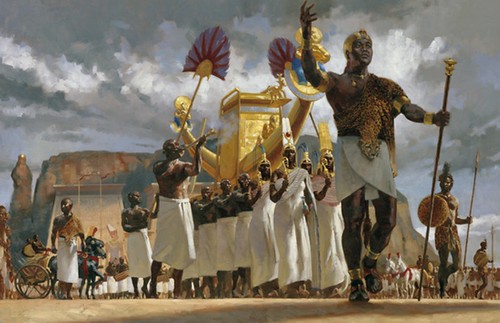
Most informationabout ancient Nubia comes from archaeological excavation and from the study of monuments and rock art found there. But the art and writing of Nubians and of eoples contemporary with them also give important evidence. Records of ancient Egypt tell much about the history of Nubia, documenting a long and complex relationship between the two lands. Monuments and texts in the Egyptian language left by the Nubian kings, who became pharaohs of Egypt’s 25th Dynastyaround 750 BC, also provide an extensive record. Nubians developed alphabetic writing systems around 200 BC during the Meroitic period. The Meroitic language is still not understood well enough to read more than words and phrases, but much documentation on Meroitic Nubia can be found in the art and literature of Greece and Rome, whose empires touched on the borders of Nubia after 330 BC.
Maya
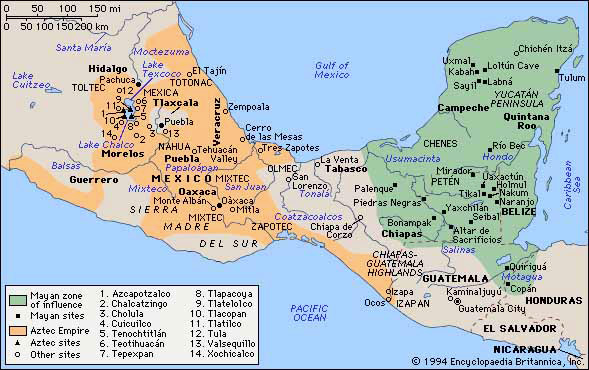
The Maya are probably the best-known of the l civilizations of Mesoamerica.Originating in the Yucatán around 2600 .C., they rose to prominence around A.D. 250 in present-day southern Mexico,Guatemala, northern Belize and western Honduras. Building on theinherited inventions and ideas of earlier civilizations such as the Olmec,the Maya developed astronomy, calendrical systems and hieroglyphic writing. The Maya were noted as well for elaborate and highly decorated ceremonial architecture, including temple-pyramids, palaces and observatories, all built without metal tools. They were also skilled farmers, clearing large sections of tropical rain forest and, where groundwater was scarce, building sizeable underground reservoirs for the storage of Rainwater. The Maya were equally skilled as weavers and potters, and cleared routes through jungles and swamps to foster extensive trade networks with distant peoples.
Around 300 B.C., the Maya adopted a hierarchicalsystem of government with rule by nobles and kings. This civilization developed into highly structured kingdoms during the Clic period, A.D. 200-900. Theirsociety consisted of many independent states, each with a rural farming community and large urban sites built around ceremonial centres. It started to decline around A.D. 900 when - for reasons which are still largely a mystery -the southern Maya abandoned their cities. When the northern Maya wereintegrated into the Toltec society by A.D. 1200, the Maya dynasty finally came to a close, although some peripheral centres continued to thrive until the Spanish Conquest in the early sixteenth century.

Maya history can be characterized as cycles of rise and fall: city-states rose in prominence and fell into decline, only to be replaced by others. It could also be described as one of continuity and change, guided by a religion that remains the foundation of their culture. For those who follow the ancient Maya traditions, the belief in the influence of the cosmos on human lives and the necessity of paying homage to the gods through rituals continues to find expression in a modern hybrid Christian-Maya faith.
Ancient China
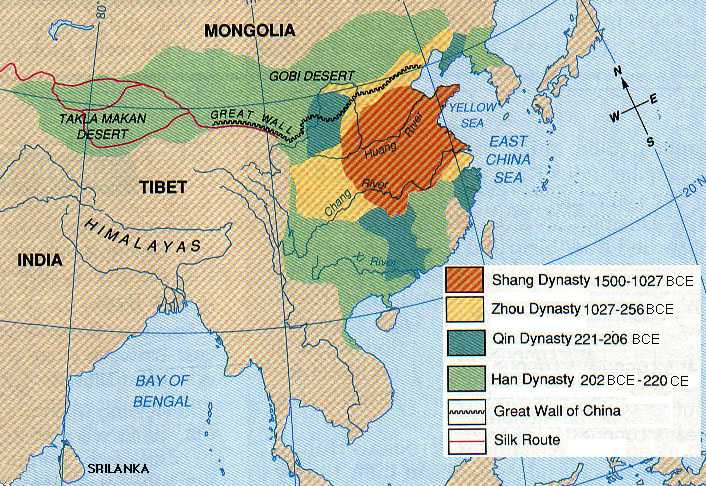
Ancient China was prosperous river-valleycivilization. The Yangtze and Huang He rivers were critical to the success of the civilization's farming settlements around 2000 BCE.
Circa 1766 BCE, the Shang family came to power andestablished a dynasty. Over the course of the Shang dynasty, a system of pictographic writing was developed that served to unify the vast and varied land. Also, a heavy emphasis was placed on respect for one's ancestors, a critical part of ancient Chinese religion. The Shang dynasty was alsocharacterized by a strong centralized government.
After extensive conflict, the Zhou dynasty claimed power circa1027 BCE. To solidify their claim to power, the Zhou said that the last Shang king was a poor ruler and had fallen out of favor with the gods. As a result, they erted, the gods had given the Zhou the power to rule through the Mandate of Heaven. In contrast to the Shang, the Zhou lacked a centralized government; instead, local rulers were given power, and conflict often resulted.
Several important belief systems emerged in ancient China.Confucianism emerged in an effort to restore the order of earlier times. The basic tenets focused on proper conduct and relationships between father and son, brothers, husband and wife, friends, and rulers and subjects. In short, this system of beliefs emphasized proper conduct in one's family as well as in society. Daoism stood in stark contrast to Confucianism. It erted that by following the way (Dao), one should seek harmony with nature. Daoists believed that if people found their way and achieved natural harmony, social harmony would follow.
The time of the Warring States began in403 BCE and was plagued by conflict among warlords. This instability lasted until 221 BCE when a Qin ruler, Shi Huangdi, put an end to the conflicts and unified ancient China under Legalism. Legalism emphasized the importance of an efficient government and a stringent code of laws supported by harsh punishments for those who did not comply. Under this system, the Chinese were discouraged from speaking out against the government and developing new and different philosophies.
.

The Han dynasty followed the Qin and lasted until 220 CE.Han rulers maintained a strong centralized government and bureaucracy but lowered taxes. Han culture prospered for many years and witnessed tremendous expansion.
The ancient Chinese left many significant legacies includingthe Silk Road (a trans-Eurasian network of trade routes), the plow, iron tools,and paper.
Ancient Greece

Greece is a mountainous peninsula in the Mediterranean witha mild climate. The land was not conducive to farming except for a small section of the region. Greece also lacked natural resources, which made it necessary for ancient Greeks to trade extensively. In exchange for olive oil, wine, wool, and pottery, the Greeks were able to obtain grain, timber, slaves, and animal hides. The Greeks had a great deal of interaction with the Phoenicians at sea, aconnection through which they obtained coinage and a written language.
The Mycenaeans were the first Greek culture. While thenobles lived lavishly, commoners were mostly traders. The Mycenaeans had gold jewelry, bronze weapons, and pottery that they exported. The Mycenaeans' civilization declined around 1200 BCE, and little is known about the succeeding 500 years because no written records were kept during that time.
Around 700 BCE, the Greeks began to organize themselvesinto city-states. Life centered around the agora (marketplace) where business,politics, and socialization took place. Throughout their early history, the Greeks experienced a monarchy and an oligarchy as well as a series of tyrants.
Ultimately, however, the Athenians devised a limited democracy in which citizens participated in and controlled every aspect of the government. A series of politicians—Solon, Cleisthenes, and others—honed the rights andresponsibilities of citizens, including jury duty and military service.
Another important aspect of life in ancient Greece was itspolytheistic religion. The Greeks had a host of myths and beliefs that they used to explain the inexplicable as well as the behavior of humans and nature. To honor their gods, the Greeks held a number of festivals, including the Olympics, a series of athletic competitions to honor Zeus, the chief deity.
The Greeks, particularly the Athenians, were highly educatedand devoted a great deal of time and energy to intellectual pursuits. Homer, a blindpoet, is believed to have scribed several epic poems, the most famous of which are the Iliad and yhe Odyssey. Aesop, anotherauthor, penned a series of fablesthat were short stories with important morals.
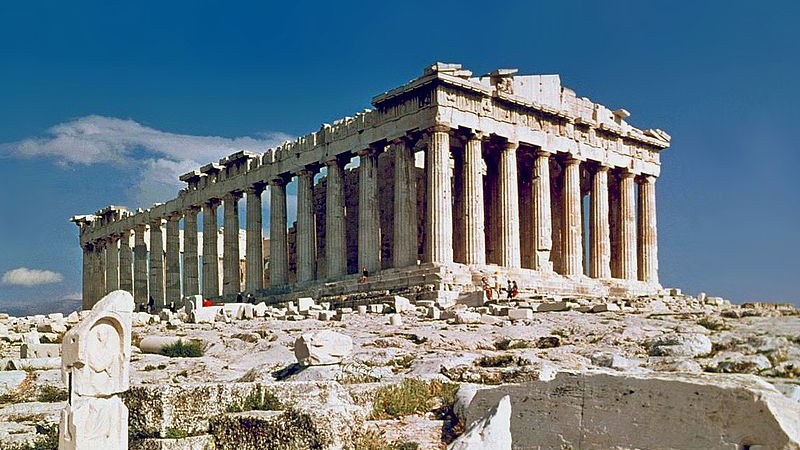
Two of the most powerful city-states in ancient Greece wereAthens and Sparta. Whereas the Athenians prized educational and intellectual development, the Spartans focused on military training. Although both city-states viewed the Persians as a threat and common enemy, they also viewedeach other suspiciously. This lack of trust would ultimately result in a serious military conflict.
Ancient Persia (Achanid Empire)

The Achaemenid Empire (c.550-330 BCE), sometimes known as First Persian Empire, was an empire in SouthwestAsia, founded in the 6th century BCE by Cyrus the Great who overthrew the Median confederation. It expanded to eventually rule over significant portions of the ancient world which at around 500 BCE stretched from the Indus Valley in the east, to Thrace and Macedon on the northeastern border of Greece making it the biggest empire the world had yet seen. The Achaemenid Empire would eventually control Egypt as well. It was ruled by a series of monarchs who unified its disparate tribes and nationalities by constructing a complex network of roads.
Calling themselves the Parsa after their original Aryan tribal name Parsua, Persians settled in a land which they named Parsua, bounded on the west by the Tigris River and on the south by the Persian Gulf. This became their heartland for the duration of the Achaemenid Empire. It was from this region that eventually Cyrus the Great (Cyrus II of Persia) would advance to defeat the Median, the Lydian, and the Babylonian Empires, opening the way for subsequent conquests into Egypt and Asia minor.
At the height of its powerafter the conquest of Egypt, the empire encomped approximately 8 million km2 spanning three continents: Asia, Africa and Europe. At its greatest extent, the empire included the modern territories of Iran, Turkey, parts of Central Asia, Pakistan, Thrace and Macedonia, much of the Black Sea coastal regions, Afghanistan, Iraq, northern Saudi Arabia, Jordan, Israel, Lebanon, Syria, and all significant lation centers of ancient Egypt as far west as Libya. It is noted in Western history as the antagonist foe of the Greek city states during the Greco-Persian Wars, for emancipation of slaves including the Jewish eoplefrom their Babylonian captivity, and for instituting infrastructures such as a postal system, road systems, and the usage of an official language throughout its territories. The empire had a centralized, bureaucratic administration under the Emperor and a large professional army and civil services, inspiring similar developments in later empires.
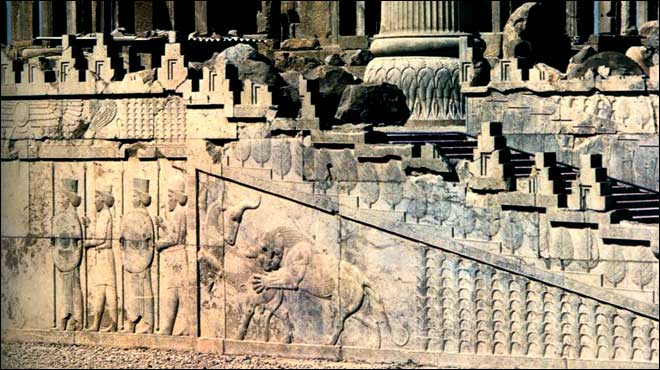
The historical mark of the Achaemenid Empire went far beyondits territorial and military influences and included cultural, social, technological and religious influences as well. Many Athenians adopted Achaemenid customs in their daily lives in reciprocal cultural exchange, some being employed by, or allied to the Persian kings. The impact of Cyrus the Great's Edict of Restoration is mentioned in Judeo-Christian texts and theempire was instrumental in the spread of Zoroastrianism as far east as China.
Even Alexander the Great, the man who would set out to conquer this vast empire, would respect its customs, by enforcing respect for the royal Persian kings including Cyrus the Great, and even by appearing in proskynesis, a Persian royal custom.
Ancient Rome

Built on seven steep hills, Rome had many geographicadvantages for its ancient citizens, including easy access to the Mediterranean sea and the Tiber River. Ancient Rome traced its beginnings back to two legends: that of brothers Romulus and Remus, and that of Aeneas, a Trojan War hero. Ultimately, however, Rome began as a monarchy in 753 BCE that was overthrown in 509 BCE, giving way to a republic.
Ancient Rome experienced a great deal of conflict betweenthe patricians (wealthy land owners) and the plebeians (poor citizens). The plebeians, although they had the right to vote, could not participate in government. The patricians eventually capitulated to the plebeians' demands and drafted the Twelve Tables, which outlined the rights and duties for all Roman citizens, including the plebeians. Much like America's government today, the Roman republic had three branches—the executive, the legislative, and thejudicial.
The Romans sought to expand their territory and began toconquer much of the Mediterranean. They became engaged in the Punic Wars in 264 BCE, fighting Carthage for control of important colonies and trade routes. After a series of three wars, the Romans finally emerged victorious and subjugated Carthage.
Rome also experienced internal conflicts, especially between the wealthy and the poor. Julius Caesar, a great military general, tried to quell these disagreements but was perceived by others as overly ambitious and power hungry. Threatened by his larity, a group of conspirators murdered Caesar on March 15, 44 BCE. With the looming question of who would control Rome and its holdings, civil wars ensued. Eventually, Caesar's great-nephew and adopted son, Octavian, took power and umed the title Augustus in 27 BCE. Rome had become an empire ruled by one all-powerful individual...precisely what the Romans had tried to avoid with the creation of the republic.

Beginning with the rule of Augustus, Rome entered into thePax Romana, two hundred years of peace and prosperity. However, Rome would soon face a threat that they least expected: an organized religion growing in the eastern part of their empire. hristianity was fast becoming lar among people throughout the Mediterranean. Nearly a century after Rome became an omnipotent empire, it faced a significant challenge.
This is it for now, if you enjoyed this article please subscribe and Vote, it will be good motivator for me to continue writing new interesting articles. o7 (Donations are welcome :3)
Support
ChocolataMandoComments (1)

ქართველებზე უამბე


